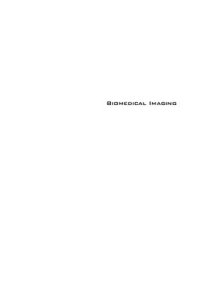
Ebook: Biomedical Imaging
Author: Mao Y. (Ed.)
- Genre: Medicine
- Tags: Медицинские дисциплины, Информационные технологии в медицине, Обработка изображений в медицине
- Language: English
- pdf
Издательство InTech, 2010, -108 pp.Biomedical imaging is becoming an indispensable branch within bioengineering. This research field has recent expanded due to the requirement of high-level medical diagnostics and rapid development of interdisciplinary modern technologies. This book is designed to present the most recent advances in instrumentation, methods, and image processing as well as clinical applications in important areas of biomedical imaging. This book provides broad coverage of the field of biomedical imaging, with particular attention to an engineering viewpoint.
Chapter one introduces a 3D volumetric image registration technique. The foundations of the volumetric image visualization, classification and registration are discussed in detail. Although this highly accurate registration technique is established from three phantom experiments (CT, MRI and PET/CT), it applies to all imaging modalities. Optical imaging has recently experienced explosive growth due to the high resolution, noninvasive or minimally invasive nature and cost-effectiveness of optical coherence modalities in medical diagnostics and therapy. Chapter two demonstrates a fiber catheter-based complex swept-source optical coherence tomography system. Swept-source, quadrature interferometer, and fiber probes used in optical coherence tomography system are described in details. The results indicate that optical coherence tomography is a potential imaging tool for in vivo and real-time diagnosis, visualization and treatment monitoring in clinic environments. Brain computer interfaces have attracted great interest in the last decade. Chapter three introduces brain imaging and machine learning for brain computer interface. Non-invasive approaches for brain computer interface are the main focus. Several techniques have been proposed to measure relevant features from EEG or MRI signals and to decode the brain targets from those features. Such techniques are reviewed in the chapter with a focus on a specific approach. The basic idea is to make the comparison between a BCI system and the use of brain imaging in medical applications. Texture analysis methods are useful for discriminating and studying both distinct and subtle textures in multi-modality medical images. In chapter four, texture analysis is presented as a useful computational method for discriminating between pathologically different regions on medical images. This is particularly important given that biomedical image data with near isotropic resolution is becoming more common in clinical environments.
The goal of this book is to provide a wide-ranging forum in the biomedical imaging field that integrates interdisciplinary research and development of interest to scientists, engineers, teachers, students, and clinical providers. This book is suitable as both a professional reference and as a text for a one-semester course for biomedical engineers or medical technology students.
Chapter one introduces a 3D volumetric image registration technique. The foundations of the volumetric image visualization, classification and registration are discussed in detail. Although this highly accurate registration technique is established from three phantom experiments (CT, MRI and PET/CT), it applies to all imaging modalities. Optical imaging has recently experienced explosive growth due to the high resolution, noninvasive or minimally invasive nature and cost-effectiveness of optical coherence modalities in medical diagnostics and therapy. Chapter two demonstrates a fiber catheter-based complex swept-source optical coherence tomography system. Swept-source, quadrature interferometer, and fiber probes used in optical coherence tomography system are described in details. The results indicate that optical coherence tomography is a potential imaging tool for in vivo and real-time diagnosis, visualization and treatment monitoring in clinic environments. Brain computer interfaces have attracted great interest in the last decade. Chapter three introduces brain imaging and machine learning for brain computer interface. Non-invasive approaches for brain computer interface are the main focus. Several techniques have been proposed to measure relevant features from EEG or MRI signals and to decode the brain targets from those features. Such techniques are reviewed in the chapter with a focus on a specific approach. The basic idea is to make the comparison between a BCI system and the use of brain imaging in medical applications. Texture analysis methods are useful for discriminating and studying both distinct and subtle textures in multi-modality medical images. In chapter four, texture analysis is presented as a useful computational method for discriminating between pathologically different regions on medical images. This is particularly important given that biomedical image data with near isotropic resolution is becoming more common in clinical environments.
The goal of this book is to provide a wide-ranging forum in the biomedical imaging field that integrates interdisciplinary research and development of interest to scientists, engineers, teachers, students, and clinical providers. This book is suitable as both a professional reference and as a text for a one-semester course for biomedical engineers or medical technology students.
Download the book Biomedical Imaging for free or read online
Continue reading on any device:

Last viewed books
Related books
{related-news}
Comments (0)